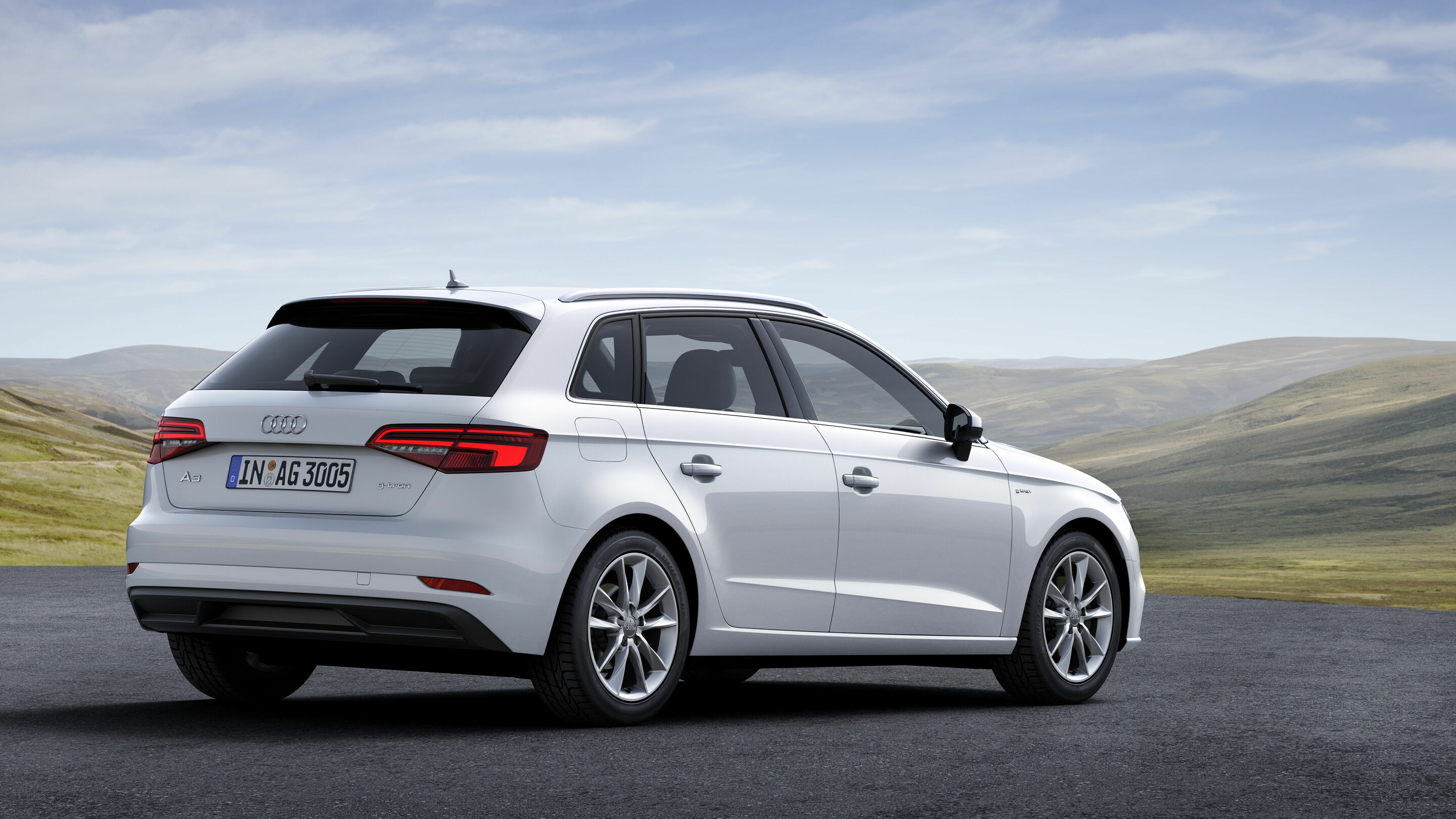Audi A3 Sportback g-tron:
Starting the New Model Year with a Longer CNG Range
- Audi A3 Sportback g-tron available to order beginning on March 7
- Noticeable power boost thanks to new engine with 131 metric hp
- Tank concept enables pure CNG range (WLTP) of around 400 kilometers (248.5 miles)
The Audi A3 Sportback g-tron (CNG consumption in kg/100 km: 3.5; combined CO2 emissions in g/km (CNG): 96–95*) is starting the new model year with a technology update. Thanks to its increased tank volume, the compact model can cover around 400 kilometers (248.5 miles) (WLTP cycle) in gas operation. Presales at dealerships in Germany will kick off on March 7. The basic price will be EUR 30,600.
The Audi A3 Sportback g-tron forms part of an integrated and sustainable mobility concept from the brand with the four rings. Equipped with a new 1.5 TFSI engine producing 96 kW (131 metric hp), the A3 Sportback g-tron sets standards for efficiency and economy. To enable the four-cylinder engine to run on these fuels, Audi engineers modified its cylinder head, turbocharging, fuel injection system and catalytic converter. Compared to gasoline, combustion of natural gas emits 25 percent less CO2 due to the lowest carbon content of all hydrocarbons. In addition, particulate emissions remain very low.
Long range thanks to third gas tank
Just as before, there are two tanks made of glass fiber-reinforced polymer (GFRP/CFRP) beneath the luggage compartment floor of the five-door car, each of which hold roughly seven kilograms (15.4 lb) of gas. They reduce luggage space only marginally and are constructed from a composite material, making them very lightweight. In the new Audi A3 Sportback g-tron, an additional steel cylinder filled with four kilograms (8.8 lb) of CNG extends the range during gas operation. Reducing the size of the gasoline tank not only frees up the necessary space for this additional gas tank, it also makes the new Audi A3 Sportback g-tron a quasi-monovalent vehicle. Using the specific benefits and dimensions of each of the two tank technologies to its advantage, the intelligent combination of GFRP tanks and the gas tank makes optimum use of the existing installation space. The gasoline tank, which now holds nine liters (2.4 US gal), provides the conventional mobility reserve.
Strict safety requirements
The two plastic tanks storing the gas with an operating pressure of up to 200 bar follow the Audi lightweight design philosophy. Thanks to their layout, they weigh 66 percent less than comparable steel cylinders. Their inner layer is a gas-tight polyamide bladder.
The load-bearing fiber-reinforced laminate consists of an inner layer of carbon fiber-reinforced polymer (CFRP) and a layer of glass fiber-reinforced polymer (GFRP) on top. This combination ensures ultra-high strength. Using GFRP not only improves stability, the composite material is also a reliable visual indicator of damage. Following an application of force from the outside, for example in the event of an accident, the color of the layer changes to a milky-white. Before being installed in a car, each tank is subjected to a hydraulic test at 300 bar during production. The average burst pressure of 580 bar is far higher than this and exceeds the legal requirements of 470 bar by far.
Convenient operation
The filler necks for gas and gasoline are located under a shared tank flap. Two indicators inform the driver about the fill levels of the tanks. The driver information system shows the fuel consumption in the active operating mode.
The Audi A3 Sportback g-tron arrives at the customer equipped with a seven-speed S tronic. In Germany, the Audi A3 Sportback g-tron costs EUR 30,600 and is available to order beginning March 7.
Fuel consumption of the models listed
(*Fuel consumption and CO2 emission figures given in ranges depend on the equipment selected)
Audi A3 Sportback g-tron:
CNG consumption in kg/100 km: 3.5;
Combined CO2 emissions in g/km (CNG): 96–95
